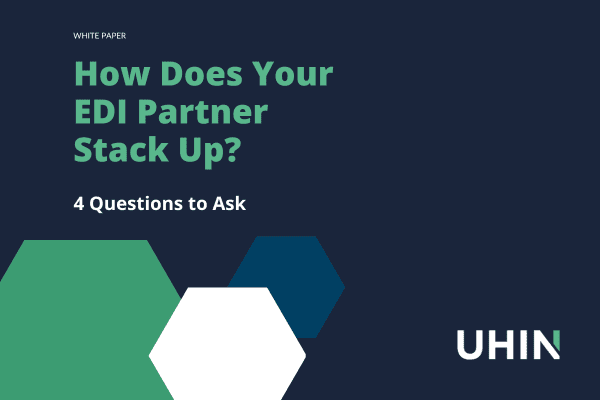
4 Questions to Ask
Question 1: Why are you with your current EDI vendor?
Health plans are often led to believe that healthcare electronic data interchange (EDI) vendors and Clearinghouses are utilities. Just a means to an end. It’s true that utilities – such as water – and EDI vendors both follow regulated protocols and move standardized, secure things.
When you turn on the faucet in your kitchen or bathroom, you expect clean, clear water delivered immediately and at your desired temperature. Often it works perfectly. However, you don’t typically choose where the water comes from or the company who provides water to you. You don’t adjust your settings at an infrastructure level and underlying delivery issues may be well beyond your control.
As a health plan, you can select your EDI vendor, enhance your provider network, adjust settings at an infrastructure level, and get ahead of underlying issues. Beneath the surface, health plans can work with expert EDI partners (not just vendors) to navigate turbulent waters together and deliver seemingly fluid experience and impactful outcomes. This process is understandably daunting despite the increased adoption of automated processes.
For this reason, health plans should ask four key questions to understand the value that their EDI vendor is bringing to the table. Our next four blog posts will cover these four simple, yet critical questions for health plans:
- With many options out there, why are you with your current EDI vendor? Are they just a vendor in your tech stack or do they serve you as a partner should?
- Can your Clearinghouse validate claims? Can you customize validation to your needs?
- Is your provider network frequently contacting you with questions? How does this impact your staff, strategy and budget?
- How does your EDI partner alleviate the burden of claims submission and simplify your administrative workflow?
Why Are You With Your Current EDI Vendor or Clearinghouse?
Our first post is introspective. We’ll look at the reasons you may be with your current Clearinghouse or EDI vendor, and how they should serve you to meet the strategic objectives of your department and company as a whole. Keep reading about the way it’s always been, and the futurist approach that health plans should take with a key strategic EDI partner.
The Way Clearinghouses Have Worked
Healthcare EDI networks have been built on vendor relationships that can be daunting and confusing, despite best intentions and the increased adoption of automated processes. Vendors offer “sticky” solutions that can entangle health plans with complicated agreements, abrasive onboarding processes, and technology that may not provide meaningful value.
Today, the essence of a partnership can get lost in the complications of healthcare EDI management. We can shift this paradigm by remembering we’re all in this together – from payers to trading partners, and providers to patients.
So, What Keeps You With Your Current Clearinghouse?
Does your partner simplify administrative burden? Do you have visibility into transactions? Do you receive timely, expert guidance on future X12 standards and HIPAA compliant transactions? An EDI partner should be focused on your holistic operations, and not merely transactions (though they should do those well, too). Perhaps it’s time to rethink the status quo.
If your EDI vendor is not serving you as a partner, you may want to consider what this relationship is costing you.

